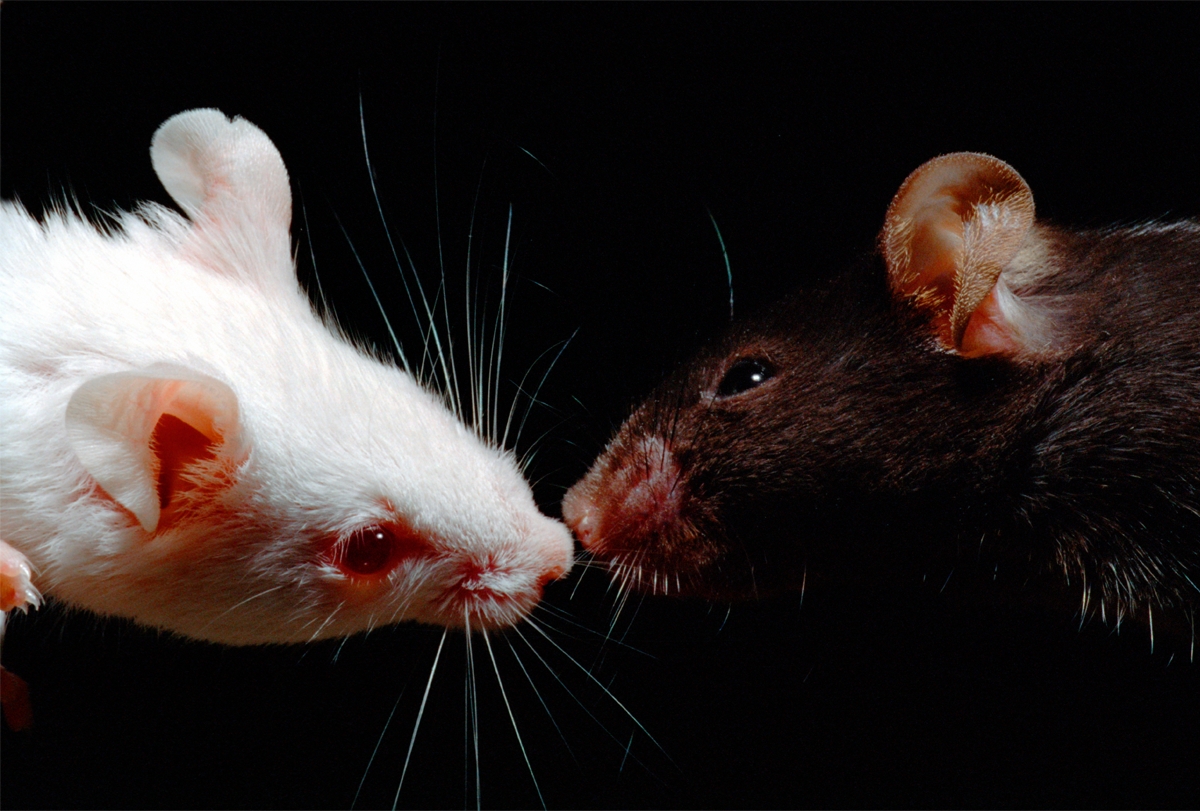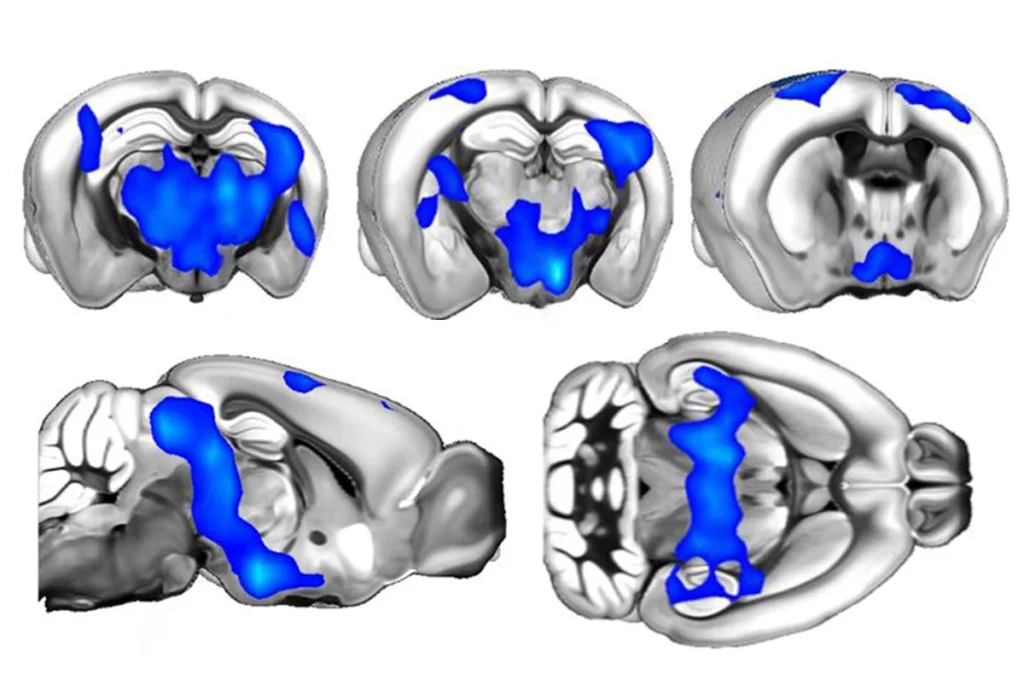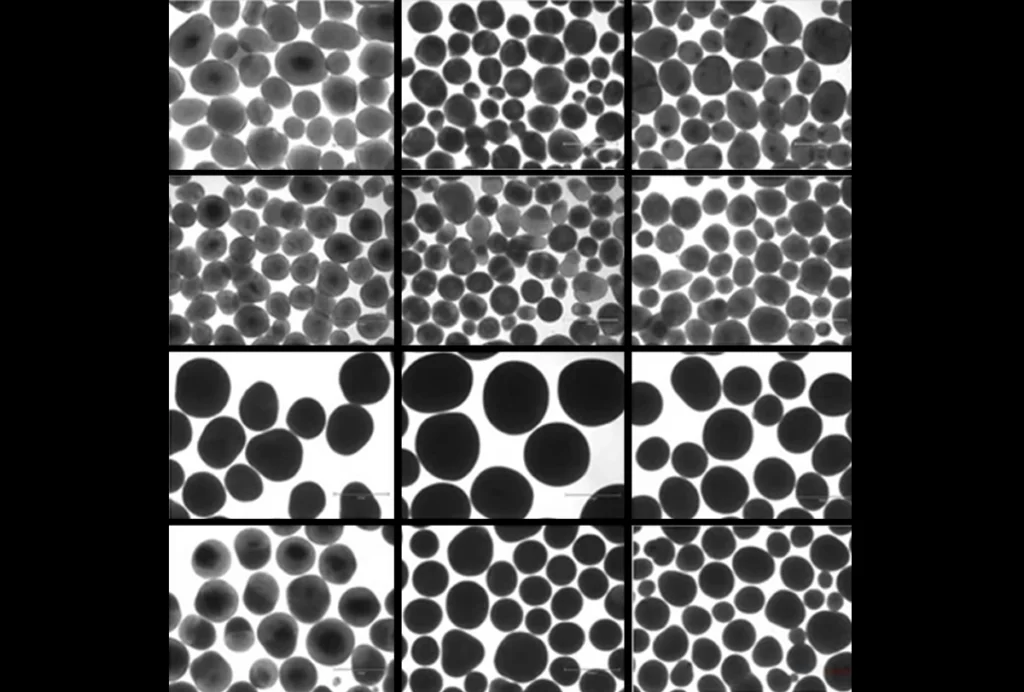A new assay measures how mice respond to social touch, a type of interaction that fosters kinship and facilitates communication between animals.
This test could help scientists study reactions to social touch in animal models of autism and understand how the brain drives these behaviors.
Mouse behavior assays often involve a trade-off between precision and ecological validity, making it challenging to evaluate social touch. The most common approaches involve freely moving animals and can elicit rich natural behavior, but at the expense of experimental control. Other social-touch assays swing in the other direction: One animal has its head fixed in place while another moves freely or is anesthetized, limiting the type and number of interactions the mice engage in.
This new test “allows us to tackle very complex behaviors that might not be possible with freely moving assays,” says study investigator Trishala Chari, a doctoral candidate in Carlos Portera-Cailliau’s lab at the University of California, Los Angeles.
M
ice use a wide array of social-touch behaviors to get to know each other, but Chari and her colleagues focused on face-to-face interactions, which most closely resemble how humans communicate. In their setup, they fix a “test” mouse’s head in place and position the animal so that it is free to run on a plastic foam ball; then they raise a motorized platform that brings the test mouse face to face with either an inanimate object or a head-fixed “visitor” mouse secured inside a plexiglass tube.In one condition, the team brought the two mice within whisker-touching distance of each other, allowing them to choose whether to socially engage. In another, the researchers positioned the mice snout to snout, forcing them to interact.
Imagine being a child at a family reunion and having a relative greet you by grabbing your face without asking. “That’s the parallel that came up for me,” says Carissa Cascio, associate professor of psychiatry and behavioral sciences at Vanderbilt University Medical Center in Nashville, Tennessee, who studies social touch in people.
Three cameras captured each interaction with high resolution, tracking the test mouse’s movement direction and speed, facial expressions and other responses, such as pupil dilation. Armed with these measurements, the researchers looked for signs of apprehension and evasion during social touch in two mouse models of autism — one missing the FMR1 gene, to emulate fragile X syndrome; and one that had been exposed in utero to a maternal immune response, grounded in theories linking maternal infections to autism.
Tactile defensiveness is a common trait among people with autism, Cascio says. “Touch that other people may perceive as neutral or pleasant can be perceived as unpleasant or aversive,” she says. “And it’s often accompanied by changes in the autonomic nervous system response.”
Both autism mouse models and control mice avoided interacting with inanimate objects, including a fuzzy toy mouse designed to mimic the shape and texture of the real thing. When forced to touch these objects, the animals grimaced and ran on their ball.
Control mice tolerated the social interactions with visitor mice, even when they were forced. But both mouse models of autism tried to avoid the visitor, grimacing and running faster on their ball. Pupil dilation, a marker of heightened arousal that is also seen in people under stress, lasted longer in FMR1 mice than in other mice. The team described their findings and their experimental rig in the Journal of Neuroscience earlier this month.
M
oving forward, Cascio speculates, this assay could be a useful tool for cross-species comparisons of social touch, because many people with autism also tend to grimace, wince or avert their gaze during social interactions She is also intrigued by the possibility of using this assay to track social-touch responses over time, to pinpoint when aversion to social touch starts to emerge in mouse models of autism.All of the component parts of the testing rig, from the motorized platform to the software driving it, are commercially available and relatively simple to set up and operate, Chari says. She hopes these features will empower other labs to use the assay for their own studies.
Because both mice are head-fixed, she adds, researchers should be able to run this social-touch test in conjunction with calcium imaging or electrophysiological recording. The assay is flexible enough for researchers to swap in different mouse models and behavioral probes, making it possible to correlate specific aspects of social touch to neural activity — something Chari is working on now.
With this degree of flexibility and precision, however, comes less natural behavior. So Chari and her colleagues are curious what would happen if the test mouse used a lever to control the motorized platform itself, she says. “This might more closely mirror a naturalistic interaction.”






